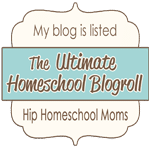Teaching Yourself How to Teach Your Child to Read:
A Phonics Snapshot
Reading Philosophy
To be frank, I do not
prescribe to any one theory or idea in reading. There are several approaches to
tackle this imperative and time-consuming task. Since I am constantly asked, “How did you teach your kids to read?” I decided
to put something together to help anyone else who has this same question. Please
research them if you like and see where you find yourself.
This information is
written to help the not-so-informed teacher or homeschool parent. It is not an end-all, be-all. It’s simply a quick
guide to introduce reading and phonics skills in a smooth way when you have no
idea of how to get started or if you’ve hit a wall in trying to introduce
something your child/student is not “getting.” Listed below are some (mostly)
sequential steps to follow in your attempt to teach an early reader how to
read. I offer definitions of what they mean and a method of introduction to use
(or not) and tweak as you see fit.
Consonants and Vowels
A consonant is any letter
that is not a vowel. For most words, vowels are identified as A, E, I, O, or U.
Sometimes Y is considered a vowel, for example in the word “my." For teaching
purposes, many decide to go through the alphabet teaching students what each
sound makes with no special emphasis on the difference between consonant or a
vowel. At this point, it is important for the student to learn all 26 letters and their sounds.
Vowels (short and long)
Once the students know all
26 letters and sounds, it is time to spend some concentrated time on isolating these 5 letters: A, E, I, O, U, as vowels.
The key idea you want to convey is that vowels are
specials letters. I have heard some teachers say vowels are the “glue”
that hold our words together. However you decide to introduce that concept is
up to you, but you want to emphasize why vowels are special. The
reason is because they make two sounds. I
normally have my children repeat that back to me. Pointing to a vowel chart I
ask, “What are these letters?” To which they respond, “Vowels!” Next I say,
“Why are they special?” And they respond, “Because they have two sounds!” Then,
I ask “what TWO sounds do they make? And they respond, “A short sound and a long sound.” Finally, I ask,
“How can we tell them apart?” And they respond, “When it’s short we say they sound and when it’s long we say the letter!” I help them
remember this phonics rule by telling them the S’s and the L’s go together. I
also teach them if a letter is not a vowel then it is consonant.
CVC Words (consonant-vowel-consonant)
After the students are
familiar with the five vowels and both of their sounds it is time to introduce
them to CVC words. CVC words are three-letter words that follow the
consonant-vowel-consonant sequence. For example: had, mug, box, pen, or bin.
These are words that most children can sound their way through using all the
above information they have learned. I also teach a very important phonics rule
here: When there is one vowel in a word, it
normally pronounced with the short sound. (I have them repeat it back to
me when I ask for until it becomes second nature in their reading.) There are
some exceptions like “my” or “be” but these are best learned through sight
words. (see below_
Word Families
A word family are groups
of words that have the same ending (in sound and spelling) but the letter(s) at
the beginning make each word its own separate word. For example, the “-UG”
family includes the following words: bug, dug, mug, jug, hug, and rug. Other
word families include “-IG”, “-AG”, “-AT”, “-AN”, “-EN” and so forth. (There
are several of them.) Word families expand the child’s reading vocabulary and
fluency. In addition, it helps with reading practice and becoming familiar
words.
Sight Words
Sight words, in essence,
are words that a reader cannot sound out
phonetically. These words must be learned by sight as they do not follow
the typical English phonics rules. There are a total of 220 words that expand
across Pre-K (pre-primer) through 3rd grade. This would be a great
time to begin introducing the words from the pre-primer and primer lists. (Though,
at this point, you have probably already taught them “the”, “a”, and “and.”) Some
words from the list include: my, who, me, you, etc. Sight words are also called
Fry Words or Dolch Words.
Silent e (Sneaky e or Magic e)
Oh, silent e! This one
gives most students a hiccup to work through. I am never sure which of these
names to call it. When I say “Silent e”, children want to know why it’s there
if it doesn’t have a sound. After all, they have learned that all letters make
a sound up to this point! When I say “Sneaky e”, they want to know why it’s
being sneaky. (I guess kids really don’t like the attribute of sneakiness.) I
always have one kid who says, “It’s not being sneaky! I see it right there.” When I call it “Magic
e” they all want to know what makes it magical and what “special powers” it
has. So let’s just say I have not figured out the ideal name to introduce this rule
of phonics. I call it “Silent e” because the students will learn more silent
letters later as they become more fluent readers. I figured consistency never
hurt anyone’s learning, so I stick with Silent e.Choose your preference.
The skill you want to
build here is the child’s ability to know when to rely on a short or long sound
from their vowels. You give the child a CVC word, for example, “mad” and you
add a “Silent e” to make the word “made.” You explain to them that once Silent
e is present it turns the short “A” sound into a long “A” sound. I sum up this
rule like this: The Silent e makes the other vowel
say its letter (or name.)
Rule of C & K
By now, children have
picked up that “c” and “k” make the same sound but they don’t know why or when
a C is used over a K and vise versa. Since they are probably beginning to write
simple sentences, I find it necessary to point out when you use “C” and “K:”
Here is the phonics rule: K comes before “i” and
“e”, C comes before “a”, “o”, and “u.”
Consonant Blends
A consonant
blend is when two or more consonants are blended together, but each sound may be heard in the blend. The
most common beginning consonant blends include: bl, br, cl, cr, dr, fr, tr, fl,
gl, gr, pl, pr, sl, sm, sp and st. Blends can also occur at the end of
words as in the word “past”. There are also blends which contain three
consonants. Common three consonant blends include: str, spl, and
spr. It is easier to teach blends in groups. For example, the r-blends (cr,
dr, fr, gr, and so on) would be considered a blend group.
Consonant Digraphs
In a consonant
digraph, two consonants are pronounced together in
one sound. The most common consonant digraphs are: sh, ch, th, and
wh. There are some ending digraphs as well, such as, nk (in the word
wink) or ng (in the word ring.) There are other consonant digraphs, but these
mentioned above are the most common.
Diphthongs
A diphthong (also known as a gliding vowel) refers to two adjacent vowel sounds occurring within the same
syllable sound. Some common diphthongs are: oo, oi, ow, ou, oy, au, aw,
ew, and ae.
There you have it! Many children
have learned to become independent readers with age-appropriate books at this
point. You will want to continue listening to your children read aloud, master
sight words per grade level, increase speed and fluency, and learn grade-level
phonics rules. I have a listed a few common phonics rules below for your
familiarity but these are the not the only rules.
Additional Phonics Rules
- The X sound is pronounced at the end of the word, not
the beginning.
- Q and U are almost always together.
- When E, O, and Y are the only vowel at the end of a
short word, it normally has a long sound. Example: “be”, “no”, or “my” (Do
and To are exceptions to the rule. That’s why they are sight words.)
- When Y is at the end of the word, it usually has the
sound of long E. Example: “funny”, “skinny”, “happy”
- The doubled consonant is pronounced in one sound.
Example: “bell”, “fuss”
- Two Vowel Rule: when 2 vowels are beside each other
the 1st one does talking, the 2nd one does the
walking. (Which means the first vowel is the one you hear.) Example:
“each”, “boat”, “toe”
Happy Teaching Reading!
Blessings,
Joyice
The Writing Enhancer

































